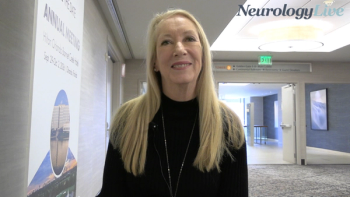
PathMaker Announces First-In-Human Trial of Neurostimulation Device MyoRegulator in ALS
In the study, patients with ALS will be asked to complete questionnaires, a physical examination, and undergo neurostimulation site visits 3 times per week for 4 weeks.
According to a recent announcement, PathMaker Neurosystems has initiated a first-in-human study assessing its noninvasive neuromodulation device MyoRegulator in patients with amyotrophic lateral sclerosis (ALS).
MyoRegulator is an investigational microprocessor-controlled device powered by rechargeable batteries that delivers noninvasive, paired trans-spinal direct current stimulation and peripheral nerve direct current stimulation using 2 pairs of 2x2in sponge-electrodes. The platform is based on PathMaker’s proprietary technology for suppression of hyperexcitable spinal motor neurons, and is built on pioneering work by Zaghloul Ahmed, PhD, a professor of neuroscience and motor control at the College of Staten Island/CUNY.
The single-center, single-arm, early feasibility study, which is currently enrolling, will collect preliminary evidence of any beneficial effects of MyoRegulator. Participants in the study will be asked to complete questionnaires and a physical examination while undergoing treatment 3 times per week for 4 weeks. Those eligible will forgo botulinum toxin, phenol or alcohol injections, intrathecal baclofen, digitalis, and morphine for the study duration. The trial is supported by funding from the Muscular Dystrophy Association, with additional support from the Cullen Education and Research Fund and the National Institutes of Health.
"We are tremendously excited to launch this first-in-human trial of MyoRegulator® in ALS," Nader Yaghoubi, MD, PhD, co-founder and chief executive officer, PathMaker, said in a statement.1 "ALS is a devastating disease with tremendous unmet needs for effective treatment options. Our non-invasive approach seeks to suppress spinal motor neuron hyperexcitability, which is a key characteristic of the ALS disease process that has been found in both sporadic and familial variants of ALS. Initiating clinical evaluation of our technology in ALS is not only a significant milestone for our company, but a step towards meeting the medical needs of people living with this disease."
READ MORE:
Those with an implanted intrathecal pump or on permanent assisted ventilation are excluded from the study. Other exclusions include the presence of an electrically, magnetically or mechanically activated implant, including cardiac pacemaker, or any other electrically sensitive support system with the exception of loop recorders. Individuals with a history of seizures or unexplained spells of loss of consciousness during the previous 12 months and any cardiac abnormality that may be exacerbated by transthoracic electrical stimulation are also excluded.
MyoRegulator has also been assessed as a treatment for upper limb muscle spasticity and upper limb function in patients with chronic stroke. A 2019 study published in Bioelectric Medicine using a small cohort of patients (n = 26) showed that treatment with the neurostimulation device resulted in significant reductions in both Modified Tardieu Scale scores (summed across the upper limb, P <.05) and in objective torque measures of the spastic catch response at the wrist flexor (P <.05), compared with sham. After 5 consecutive daily sessions, separated by a washout period, treated individuals showed improvements in motor function, reflected in changes on Fugl-Meyer and Wolf Motor Function Test (P <.05 for both).
An analysis of the acute effects of the neurostimulation device revealed a significant main effect of condition on percent change in muscle resistance at slow and fast speeds (F1,19 = 10.58; P = .004; F1,19 = 12.40; P = .002, respective). While muscle resistance tested at visit 11 (immediately after active treatment) decreased by 6% and 9% for slow and fast speeds, respectively, muscle resistance increased by 13% and 17% in the same respective groups at visit 5 after sham treatment. Optimal response was noted at visit 13, with a mean decrease of –20.53% (±7.69) at slow speed and –19.20% (±5.83) at fast speed.
REFERENCES
1. PathMaker Neurosystems announces initiation of first-in-human trial in ALS for non-invasive neuromodulation device. News release. PathMaker Neurosystems. September 14, 2023. Accessed September 21, 2023. https://www.biospace.com/article/releases/pathmaker-neurosystems-announces-initiation-of-first-in-human-trial-in-als-for-non-invasive-neuromodulation-device/
2. Electrical stimulation for ALS. News release. Mass General Brigham. Accessed September 21, 2023. https://rally.massgeneralbrigham.org/study/als_myoregulator .
3. Paget-Blanc A, Chang JL, Saul M, Lin R, Ahmed Z, Volpe BT. Non-invasive treatment of patients with upper extremity spasticity following stroke using paired trans-spinal and peripheral direct current stimulation. Bioelectric Medicine. 2019;5:11. doi:10.1186/s42234-019-0028-9
Newsletter
Keep your finger on the pulse of neurology—subscribe to NeurologyLive for expert interviews, new data, and breakthrough treatment updates.




































